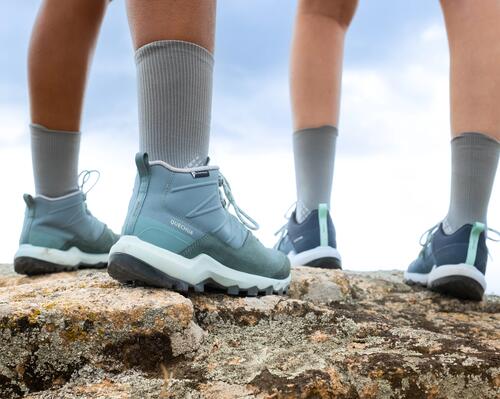Generally speaking, when we talk about hiking, one rule often comes to mind: the three-layer rule. This essential rule helps you to choose the perfect hiking outfit for activity in optimum conditions.
The first layer, or base layer, is the one closest to the body. This layer should have good absorbency properties to wick away sweat, which is often the case when hiking. Opting for such a material lets moisture spread over the fabric and evaporate quickly, protecting you from any cold sensations. You'll find below the materials you should choose for your first layer, so that it provides you with undeniable comfort during your trek.
The second layer, also known as the intermediate layer, is what you wear over your base layer. The main role of this second layer will be to insulate you effectively from the cold, while offering you pleasant breathability when you climb to higher altitudes. Note that the breathability of your second layer is essential, as it lets the perspiration absorbed by the first layer to be properly wicked away.
The third layer is the outer layer. This is the trekking garment that will protect you from bad weather (wind, rain, etc.), while also encouraging the evacuation of moisture. Note that when you choose your hiking clothing, you will find indications such as "waterproof" or "water-resistant". It's important to distinguish between these two criteria, since water resistance will protect you from light, temporary rain, while waterproof trekking clothing will keep you dry for several hours, no matter how heavy the downpour. For a summer hike, water resistance should be enough.
The aim of the three layer rule is to keep you comfortable throughout your adventure, even in summer. Indeed, as soon as your route takes you to the highest points, a drop in temperature is to be expected; That's why it's a good idea to opt for several layers of clothing.













